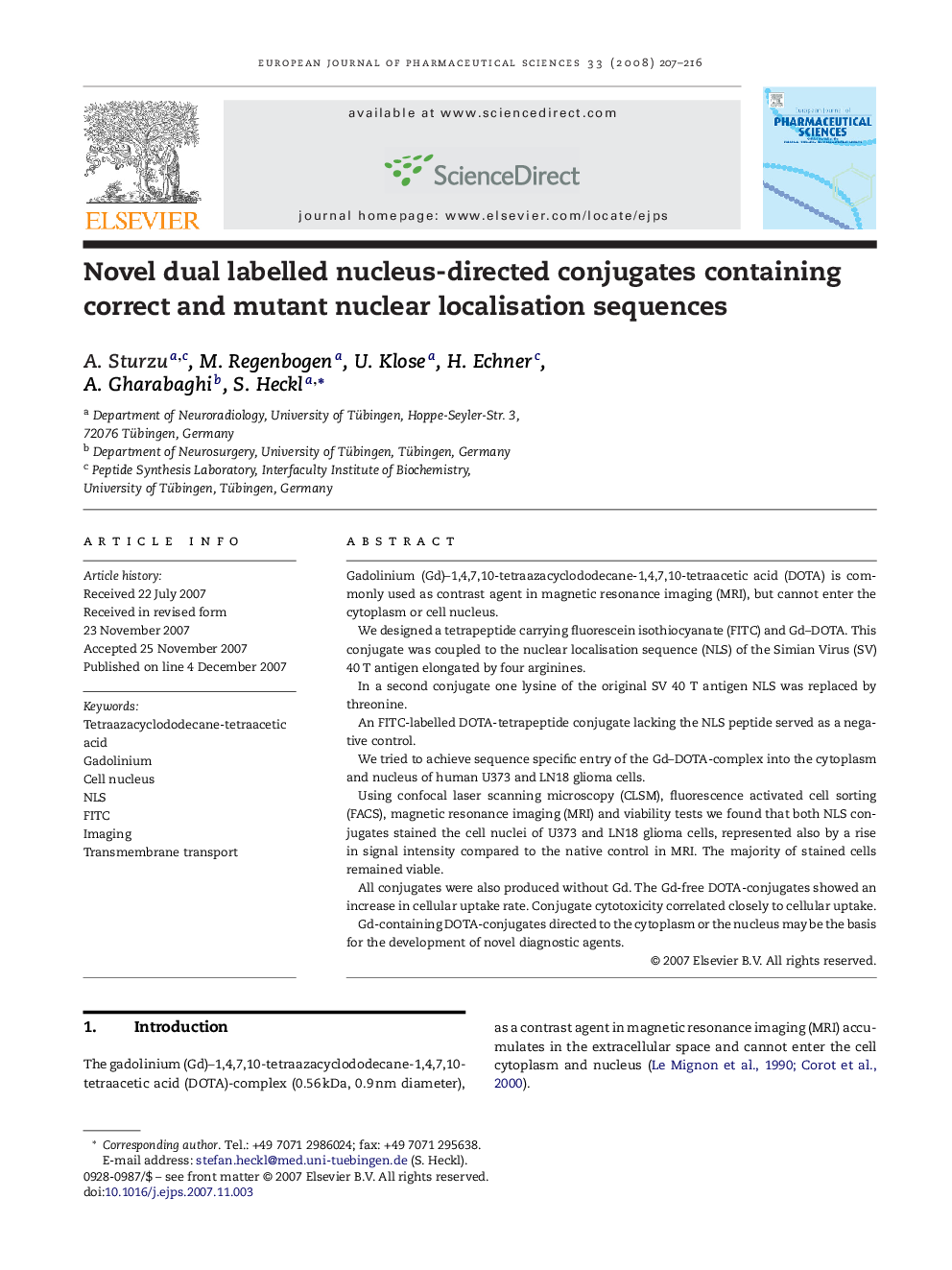| Article ID | Journal | Published Year | Pages | File Type |
|---|---|---|---|---|
| 2481888 | European Journal of Pharmaceutical Sciences | 2008 | 10 Pages |
Gadolinium (Gd)–1,4,7,10-tetraazacyclododecane-1,4,7,10-tetraacetic acid (DOTA) is commonly used as contrast agent in magnetic resonance imaging (MRI), but cannot enter the cytoplasm or cell nucleus.We designed a tetrapeptide carrying fluorescein isothiocyanate (FITC) and Gd–DOTA. This conjugate was coupled to the nuclear localisation sequence (NLS) of the Simian Virus (SV) 40 T antigen elongated by four arginines.In a second conjugate one lysine of the original SV 40 T antigen NLS was replaced by threonine.An FITC-labelled DOTA-tetrapeptide conjugate lacking the NLS peptide served as a negative control.We tried to achieve sequence specific entry of the Gd–DOTA-complex into the cytoplasm and nucleus of human U373 and LN18 glioma cells.Using confocal laser scanning microscopy (CLSM), fluorescence activated cell sorting (FACS), magnetic resonance imaging (MRI) and viability tests we found that both NLS conjugates stained the cell nuclei of U373 and LN18 glioma cells, represented also by a rise in signal intensity compared to the native control in MRI. The majority of stained cells remained viable.All conjugates were also produced without Gd. The Gd-free DOTA-conjugates showed an increase in cellular uptake rate. Conjugate cytotoxicity correlated closely to cellular uptake.Gd-containing DOTA-conjugates directed to the cytoplasm or the nucleus may be the basis for the development of novel diagnostic agents.
